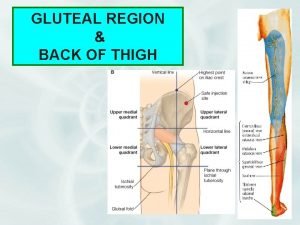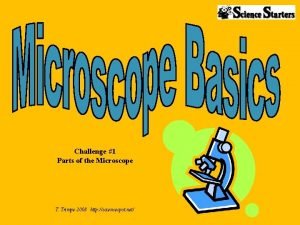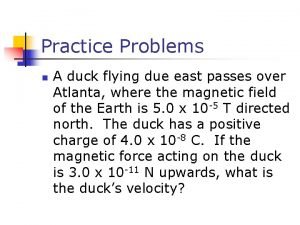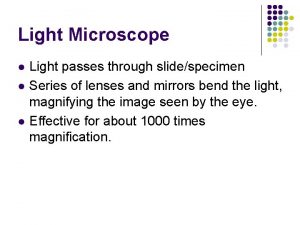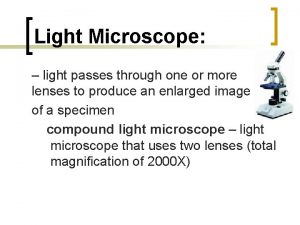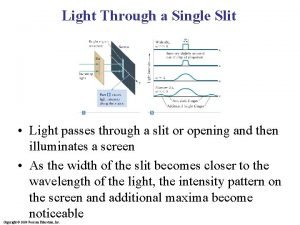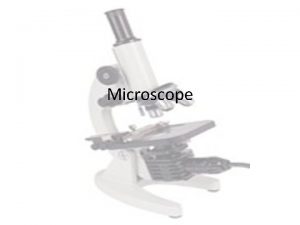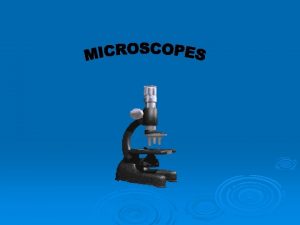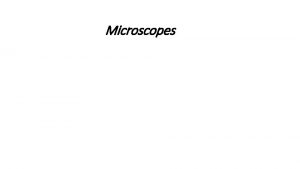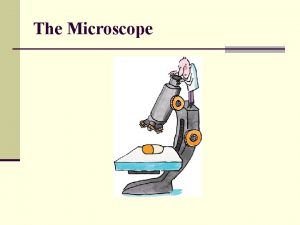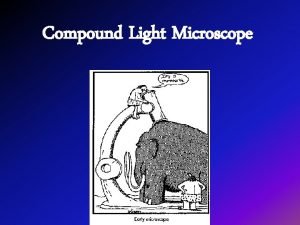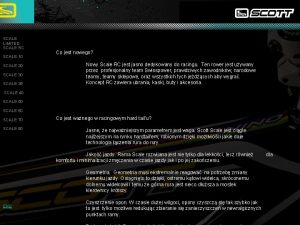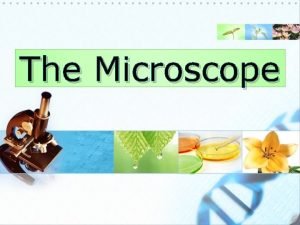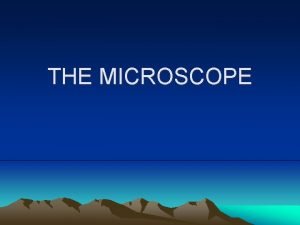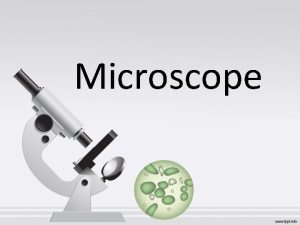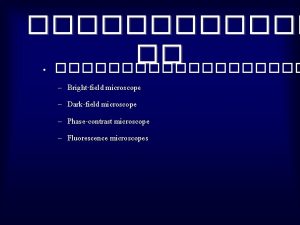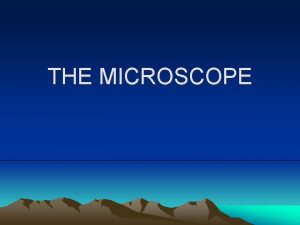Microscope Use Scale Simple Microscope Light passes through


















- Slides: 18

Microscope Use

Scale

Simple Microscope �Light passes through only 1 lens. �Example: magnifying glass

Compound Microscope �Lets light pass through an object and then through two or more lenses.

Parts of the Microscop e Drag the box to view the correct answer underneath. Ocular lens (Eyepiece) Body Tube Nosepiece Low Power Objective Arm High Power Objective Stage Clips Diaphragm Light Coarse Adjustment Fine Adjustment Base Always carry a microscope with one hand holding the arm and one hand under the base.

Microscope Parts & Their Functions Drag the box to view the correct answer underneath. Controls the amount of light entering the microscope Makes large changes in focus Makes small changes in focus Holds the slide in position Has the greatest magnification Has the least magnification diaphragm Coarse adjustment Fine adjustment Stage clips High power objective Low power objective

What’s my power? To calculate the power of magnification, multiply the power of the ocular lens (eyepiece) by the power of the objective lens. What are the powers of magnification for each of the objectives we have on our microscopes? Fill in the table on your worksheet.

Microscope Care • Always carry with 2 hands (arm and base) • Only use lens paper for cleaning • Do not force knobs • Always store covered • Keep objects clear of desk and cords

Using the Microscope • Lower stage all the way • Rotate nosepiece and click the low-power objective lens(shortest) into position over lens the stage • Place the slide on the microscope • Look into the eyepiece • Use the Coarse Adjustment knob to locate the object • Use the Fine Adjustment to sharpen the image

How to make a wet-mount slide … 1 – Get a clean slide and coverslip from your teacher. 2 - Place the object you are viewing in the center of the slide 3 – Place ONE drop of water on the object. Don’t use too much or the water will run off the edge and make a mess! 4 – Place the edge of the cover slip on one side of the water drop. 5 - Slowly lower the cover slip on top of the drop. Cover Slip Lower slowly 6 – Tap out the air bubbles. 7 - Use a paper towel to blot up any excess water.

Stereoscopic Microscope �Gives a three dimensional view of an object. (Examples: insects and leaves) �Used for dissections

Electron microscopes – use a beam of electrons instead of a beam of light to magnify the image

Electron Microscopes • can achieve 3 D images using electrons

The Scanning Electron Microscope �produces a 3 -dimensional image of specimen’s surface features spider head of a butterfly

Scanning electron microscopy (SEM) Types of specimens: -Whole organisms -Natural tissue surfaces -Exposed tissue structure A flea magnified 50 000 X What is this?

Transmission electron microscopy (TEM). • Allows the observation of molecules within cells • Allows the magnification of objects in the order of 100, 000’s.

Transmission electron microscope (TEM) ◦ ◦ Provides for detailed study of the internal ultrastructure of cells a beam of electrons Longitudinal Cross section is transmitted through of cilium section of cilium the specimen for a 2 D view Figure 6. 4 (b) cilia on rabbit lungs 1 µm

Transmission electron microscope Chloroplast from a tobacco leaf H 1 N 1 virus
 What ecological role best describes grizzly bears?
What ecological role best describes grizzly bears? International date line passes through
International date line passes through The prime meridian passes through which city in africa
The prime meridian passes through which city in africa Nerve innervation gluteus maximus
Nerve innervation gluteus maximus Miller indices plane generator
Miller indices plane generator What happens when light passes from air into water
What happens when light passes from air into water When light passes from one material to another
When light passes from one material to another Difference between light microscope and electron microscope
Difference between light microscope and electron microscope Microscope mania compound light microscope
Microscope mania compound light microscope Light light light chapter 23
Light light light chapter 23 Into the light chapter 22
Into the light chapter 22 Light light light chapter 22
Light light light chapter 22 Andreu cardo martinez
Andreu cardo martinez A duck flying due east passes over atlanta
A duck flying due east passes over atlanta Leave ar
Leave ar 8 regras do handebol
8 regras do handebol Two pass shell and tube heat exchanger
Two pass shell and tube heat exchanger Qq moves
Qq moves Amusement parks physics
Amusement parks physics



